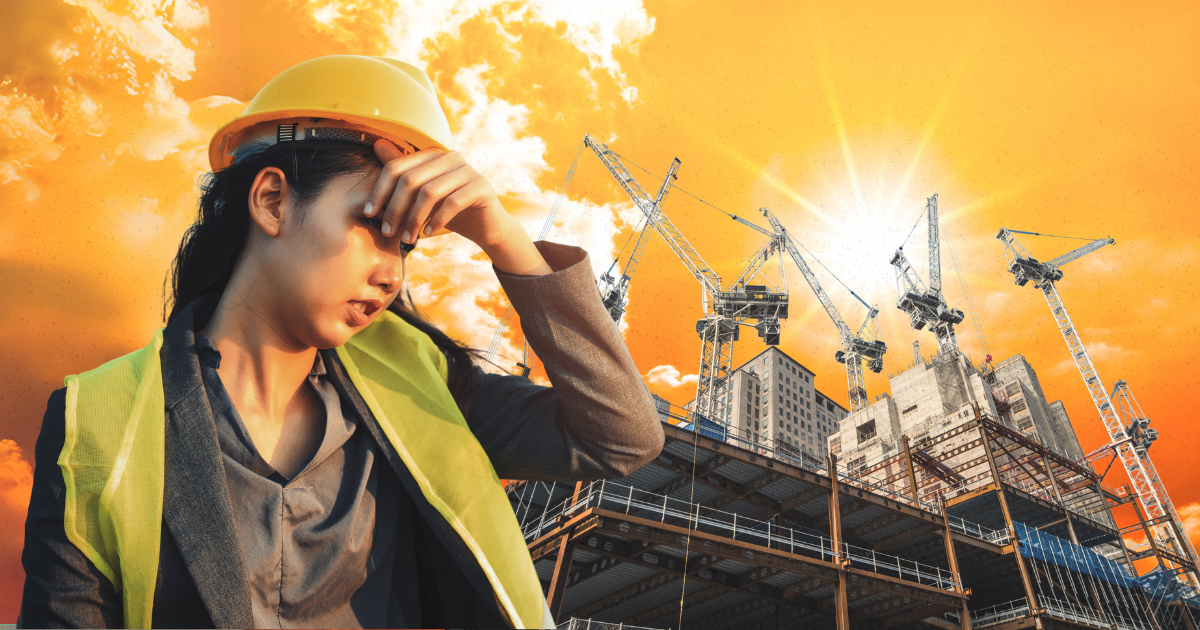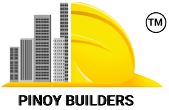What is the effect of the current soaring heat index on construction businesses?
The dry season has been especially harsh this year. Reports indicate that the heat index has reached 42°C in NCR, 45°C in Region 1, and 46°C in Region 2. This level of heat goes beyond discomfort. For construction businesses, it can directly affect operations, labor, and bottom lines.
Working Under the Sun Jeopardizes the Health and Safety of the Workers
As one can imagine, working during the hottest summers of the month proves perilous for professionals who work outdoors. Among these workers are construction professionals who face the hurdles of a construction site while exposed to extreme temperatures.
Unfortunately, such weather leads to more than just discomfort among the workers. Prolonged sun exposure increases the risk of heat exhaustion, dehydration, and even heat stroke. As conditions worsen, fewer workers show up on site, resulting in slower progress and extended timelines for ongoing projects.

In fact, the Revised Implementing Rules and Regulations of Republic Act No. 11058 require construction companies to prepare an Occupational Safety and Health (OSH) program that includes specific measures against heat stress. This program must follow DOLE Labor Advisory No. 08, Series of 2023, which outlines safety guidelines to prevent heat-related illnesses at the workplace. These guidelines emphasize proper hydration, shaded rest areas, and schedule adjustments—all of which are now recognized compliance requirements, not just best practices.
Right to Refuse Work
The Department of Labor and Employment (DOLE) released Advisory No. 17-2022, which allows workers to skip work on days with extreme heat. This advisory prioritizes the overall safety and health of workers, but it can significantly affect their income, which, often, relies solely on the project at hand. Days missed are typically unpaid unless workers have available paid leave.
To keep things fair, employers are encouraged to offer flexibility, but there is no strict requirement to do so. This puts pressure on both business owners and workers to find a middle ground—something that will keep the business running smoothly while the employees stay employed.
Moreover, before a project begins, contractors and subcontractors are required to submit a Construction Safety and Health Program (CSHP) to DOLE for approval. This plan should account for heat index risks and include provisions such as emergency response procedures for heat-related conditions, and options for flexible schedules to reduce sun exposure, validating the right of workers to seek safer working conditions.
International Comparison: Australia vs. the Philippines
Extreme heat and its effects on the construction industry have become increasingly damaging in recent years due to climate change. The truth is that the biggest victims of the issue are the workers. During extreme heat, a construction business will only have to halt outdoor operations, but internal processes done in indoor office spaces can continue. On the other hand, workers, in times of extreme heat, will not only face risks of losing income indefinitely, but if they do decide to continue working, they can risk their health, or worse, their lives.
This concern continues to be a prevalent issue in the construction industry. In fact, around the same period last year, we highlighted how other countries approach extreme heat in the workplace. In Australia, employers are required to find alternative indoor work for employees when field conditions become unsafe. In contrast, construction workers in the Philippines often face a “no work, no pay” situation during extreme heat. Without strong alternatives or protective labor measures, these conditions place added strain on small to mid-sized construction businesses.
The Business Impact: Delays and Lower Productivity
High heat index conditions pose serious challenges on construction sites. While workers face immediate physical strain, the broader impact is felt across the entire operation. Business owners must deal with schedule disruptions, added expenses, and increased safety concerns.
When extreme heat leads to labor shortages or slower output, projects risk falling behind. This can result in missed deadlines, penalties from clients, and unplanned costs due to idle equipment or the need for overtime work. In certain instances, the need to adjust entire timelines can have a significant impact on multiple stakeholders and strain budgets.
Pushing through these conditions without proper safety measures also raises the risk of workplace accidents and potential liability issues. Managing heat-related challenges, then, isn’t just about protecting workers; it’s also essential to keeping projects efficient, compliant, and financially on track.
Heat Stress Measures Are Now a Legal Obligation
Business owners should also be aware that failing to address heat-related hazards can result in non-compliance with national labor standards. The OSH program under RA 11058 must include fatigue management, proper scheduling, and safety inspections, especially during extreme weather. This isn’t only about protecting your workforce but also about complying with regulatory expectations that can impact your business’s ability to operate and win future contracts, especially for publicly funded projects.
What Construction Business Owners Can Do
Business owners need to adapt. Construction owners need practical ways to keep projects moving without putting workers at risk. Here are a few steps to consider:
- Monitor daily heat index reports and adjust work plans accordingly.
- Consider shifting work hours to earlier in the day or implementing night shifts when it is feasible.
- Set up shaded rest areas, hydration stations, and signage to remind teams to drink water often.
- Review company policies and explore options for paid leave or light-duty indoor work.
- Make sure your Construction Safety and Health Program (CSHP) is updated and aligned with DOLE’s latest advisories, including heat stress prevention protocols under Labor Advisory No. 08, Series of 2023.
Small changes in operations can go a long way in protecting workers and maintaining project timelines.
Plan Ahead for Extreme Heat
The heat isn’t going away anytime soon. With climate patterns shifting, high heat indexes may become a regular challenge. Businesses that plan ahead and build flexibility into their workflows will protect their workers and their operations. Proactive solutions are not just about safety—they’re smart management.
Review your CSHP and ensure it’s in line with DOLE regulations, ka-Builders. Be aware: heat stress is now a compliance issue, not just a weather issue
References
Echt, A., Earnest, S., Garza, E., & Socias, C. (2020, May 21). Heat Stress in Construction | Blogs | CDC. CDC Blogs. Retrieved May 19, 2025, from https://blogs.cdc.gov/niosh-science-blog/2020/05/21/heat-stress-construction/
Heat exposure and productivity loss among construction workers: a meta-analysis. (n.d.). BMC Public Health. https://bmcpublichealth.biomedcentral.com/articles/10.1186/s12889-024-20744-x
PAGASA. (n.d.). PAGASA Heat Index. PAGASA. Retrieved May 19, 2025, from https://www.pagasa.dost.gov.ph/weather/heat-index
Streegan, C. J. (2024, November 25). Work Suspensions in the Private Sector: Weathering the Storm Safely under Labor Advisory No. 17-2022. AJA Law. Retrieved May 19, 2025, from https://www.ajalaw.ph/stormworksuspensions/










